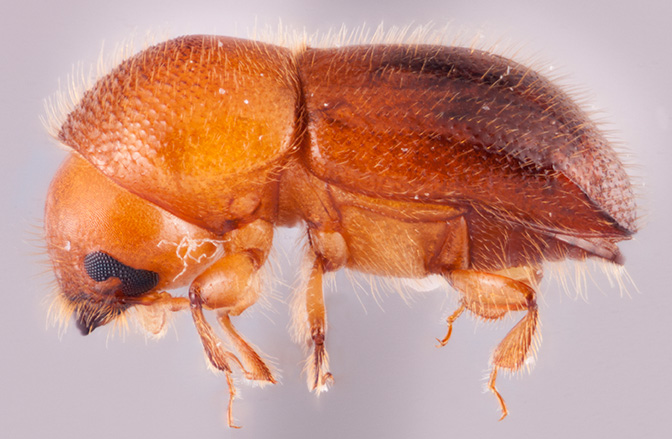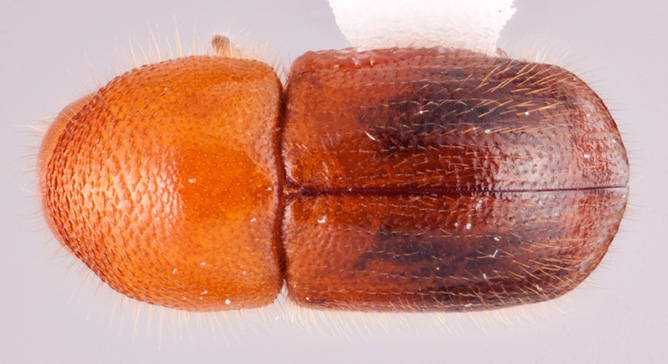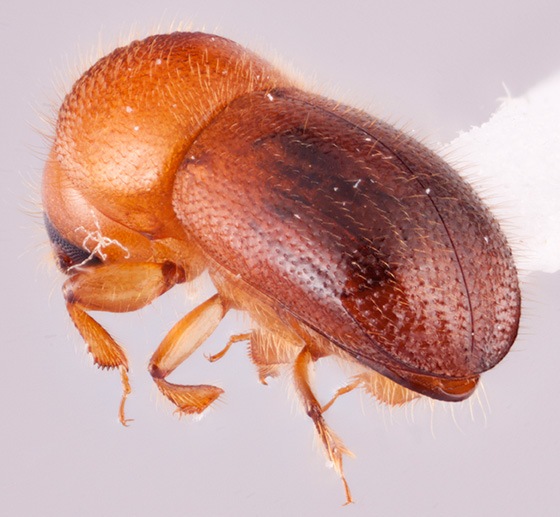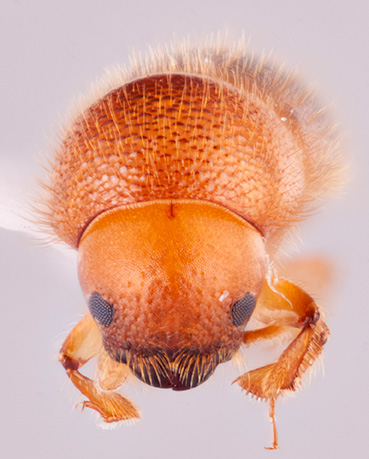Coptodryas inornata
|
Coptodryas inornata holotype lateral; R.K. Osborn |
|
Coptodryas inornata holotype dorsal; R.K. Osborn |
|
Coptodryas inornata holotype declivity; R.K. Osborn |
|
Coptodryas inornata holotype frontal; R.K. Osborn |
Taxonomic history
Coptodryas inornata Smith, Beaver & Cognato 2020 (in Smith et al. 2020bSmith et al. 2020b:
Smith SM, Beaver RA, and Cognato AI. 2020b. A monograph of the Xyleborini (Coleoptera, Curculionidae, Scolytinae) of the Indochinese Peninsula (except Malaysia) and China. ZooKeys 983: 1-442. https://doi.org/10.3897/zookeys.983.52630): 162.
Diagnosis
3.1−3.2 mm long (mean = 3.14 mm; n = 5); 2.38−2.46 times as long as wide. This species can be distinguished by the lack of a tuft of setaeseta:
small hair-like or scale-like structure
along the elytralelytral:
pertaining to the elytra
basebase:
point or edge closest to the body; opposite of apex ; declivitydeclivity:
; declivitydeclivity:
downward slope of either the pronotum or elytra
 rounded; elytraelytron:
rounded; elytraelytron:
the two sclerotized forewings of beetles that protect and cover the flight wings
shining; striaestria:
punctures in rows, which may or may not be impressed to make grooves and interstriaeinterstria:
and interstriaeinterstria:
longitudinal spaces along the elytra between the striae, which is not as<br />
impressed and bear smaller punctures.
 distinct; interstrial punctures confusedconfused:
distinct; interstrial punctures confusedconfused:
of markings, having indefinite outlines or running together as lines or spots without definite pattern; usually referring to punctures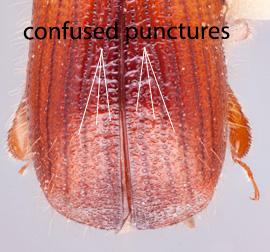 ; body lightly setose; antennalantennal:
; body lightly setose; antennalantennal:
pertaining to the antennae
club as broad as tall; protibiaprotibia:
tibia of the first pair of legs
distinctly triangular; pronotumpronotum:
the dorsal surface of the thorax
basic (type 0) when viewed laterally, basic (type 2) when viewed dorsally; and anterioranterior:
the front or forward; opposite of posterior margin of the pronotumpronotum:
margin of the pronotumpronotum:
the dorsal surface of the thorax
without a row of serrationsserration:
row of asperities; a saw-like structure  .
.
This species strongly resembles Xylosandrus formosae which also lacks a distinct mycangial tuftmycangial tuft:
tuft of setae that denotes the mycangia exterior opening
 (at the basebase:
(at the basebase:
point or edge closest to the body; opposite of apex of the pronotumpronotum:
of the pronotumpronotum:
the dorsal surface of the thorax
) and both have triangular protibiaprotibia:
tibia of the first pair of legs
. Coptodryas n. sp. 2 can be distinguished by the antennalantennal:
pertaining to the antennae
club type 3 (as described for genus), and elytralelytral:
pertaining to the elytra
basebase:
point or edge closest to the body; opposite of apex sinuate and costate.
sinuate and costate.
May be confused with
Euwallacea fornicatus, E. kuroshio, E. perbrevis, Microperus fulvulus, and Xylosandrus formosae
Distribution
Vietnam
Host plants
unknown (Smith et al. 2020bSmith et al. 2020b:
Smith SM, Beaver RA, and Cognato AI. 2020b. A monograph of the Xyleborini (Coleoptera, Curculionidae, Scolytinae) of the Indochinese Peninsula (except Malaysia) and China. ZooKeys 983: 1-442. https://doi.org/10.3897/zookeys.983.52630)
DNA data
Sequences available for COI and CAD.
COI: MN619883
CAD: MN620170

